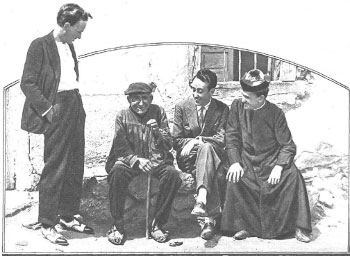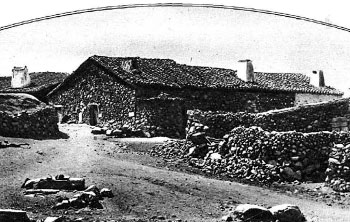This website uses cookies so that we can provide you with the best user experience possible. Cookie information is stored in your browser and performs functions such as recognising you when you return to our website and helping our team to understand which sections of the website you find most interesting and useful.
Origin of the name

“According to oral tradition, the town was called Santa María la Mayor. The first data written that speak of Cervera de Buitrago as such date back to the sixteenth century. For many authors, the name comes from the Latin cervus Cervera, Cervaria, which means “deer populated place,” because of the many deer that were grazing in antiquity here, but there are other theories. One of them affirms its Latin origin, but of the cervix voice (nape), that could be interpreted like “hill or hill”. The Arabists divide the word into two: sirb, meaning “road” and to go, which means “plain” so that Cervera would be “the road of the plain or road that leads to the plain.” Finally, those who advocate the importance of flora in toponymy, say that the word Cervera comes from “Sorbus domestic”, the name of the tree of the rosaceae family called “Serbal”.
History
 Cervera de Buitrago 1928
Cervera de Buitrago 1928
“It is possible the existence of primitive seats in Cervera Paleolithic (600000-4000 A.C.) due to its proximity to the river, since it represented a source of food, water* and defense.
The origin of Cervera in the Arab period (in the eighth century) is different, although it may have remained unpopulated, since it belonged to the Middle Tag (border area between Islamic and Christian) and was located very close to the watchtowers built by Abderraman III around 950, the Berrueco, in order to control the access of the port of Somosierra to a very rich and well populated area, the Jarama Valley. Although also Cervera could be founded like one of the numerous farms existing around the fortifications raised by the Umayyads to contain the Christian advance.
In any case, the entire area was taken in 1085 with the rest of the kingdom of Toledo by Alfonso VI, King of Castile and Aragon, who granted Buitrago the privilege of repopulating the entire region, including Cervera, in 1096. The community of Villa and Land of Buitrago counted on grasses, services and common laws, with the intention of obtaining a greater use of the land.
Jurisdiction was subject to the house of the Dukes of the Infantado, holders of certain rights translated into the perception of certain rents and a series of privileges that updated their jurisdictional domain, mainly the appointment of the corregidor of Buitrago, maximum judicial and administrative authority “.
Interesting links
Here are some interesting links for you! Enjoy your stay :)Cervera de Buitrago
Ayuntamiento de Cervera de Buitrago
Teléfono / fax: 91 868 71 17
Correo electrónico:
adl@cerveradebuitrago.org

